Welcome to one of the most active flamenco sites on the Internet. Guests can read most posts but if you want to participate click here to register.
This site is dedicated to the memory of Paco de Lucía, Ron Mitchell, Guy Williams, Linda Elvira, Philip John Lee, Craig Eros, Ben Woods, David Serva and Tom Blackshear who went ahead of us.
We receive 12,200 visitors a month from 200 countries and 1.7 million page impressions a year. To advertise on this site please contact us.
|

|
|
TRUSS RODS...
|
You are logged in as Guest
|
|
Users viewing this topic: none
|
|
Login  | |
|
Guest

|
 RE: TRUSS RODS... (in reply to JBASHORUN) RE: TRUSS RODS... (in reply to JBASHORUN)
|
|
|
I agree that the cedar is stiff enough to support string tension. The main reason I use reinforced necks is avoid warping, which can be seen in so many older guitars.
Ebony is a very poor wood for that. Heavy and unstable. Rosewood is a bit the same. I´ve done a lot of tests on woods, and found an african hard wood sort called Kotebe here in Spain, which is extremely stable and just slightly heavyer than the cedar. Also, the gluing or lamination itself makes the neck a lot stronger and stable. I would never build without reinforcement, it´s just so sad to see your instrument die because the neck warps. 
_____________________________
|
|
|
|
REPORT THIS POST AS INAPPROPRIATE |
Date Mar. 30 2006 7:25:53
 |
|
Guest

|
 RE: TRUSS RODS... (in reply to JBASHORUN) RE: TRUSS RODS... (in reply to JBASHORUN)
|
|
|
quote:
If possible, please can you recommend an international supplier for a Kotebe neck strip?
  Yeah, I´m not even sure it´s called kotebe, and the wood suplier here ,Polanco, is not what I call very modern. Anyway, they call wood weird names, like pine is called Flanders, which sounds Dutch to me, the wood is most probably from Sweeden or Finland. So maybe Kotebe is something from Asia in the end. I just bought some planks a while ago and left it under horrible circumstances, like dirsect sun, humidity, frost, and the thing did not crack, warp or change size... good wood for reinforcement strips. Yeah, I´m not even sure it´s called kotebe, and the wood suplier here ,Polanco, is not what I call very modern. Anyway, they call wood weird names, like pine is called Flanders, which sounds Dutch to me, the wood is most probably from Sweeden or Finland. So maybe Kotebe is something from Asia in the end. I just bought some planks a while ago and left it under horrible circumstances, like dirsect sun, humidity, frost, and the thing did not crack, warp or change size... good wood for reinforcement strips.
A very good, stable, strong, a little bit heavier and harder wood and easy to get is Sapelly... You´ve got to make the strips yourself  I do 6 x 12mm I do 6 x 12mm
_____________________________
|
|
|
|
REPORT THIS POST AS INAPPROPRIATE |
Date Mar. 30 2006 17:58:15
 |
|

 
JBASHORUN
Posts: 1839
Joined: Jan. 23 2005

|
 RE: TRUSS RODS... (in reply to JBASHORUN) RE: TRUSS RODS... (in reply to JBASHORUN)
|
|
|
Yes, I found the Kotibe too. Over here it is also called "Danta" wood. But it seems no-one stocks this wood, and it is quite rare here. If I use a neck strip, I'll have to go with the Sapele.
Armando, if what you say is true, then my mahogany neck should be stable enough without a truss rod, which is good news. But I went to the store room today, and the technician gave me a cedar neck blank, so I might just start the neck again from scratch if you guys think it will make a big difference. Although my teacher tells me the neck material won't really affect the sound much, just the weight...
Thanks,
Jb
|
|
|
|
REPORT THIS POST AS INAPPROPRIATE |
Date Apr. 3 2006 15:18:18
 |
|
Guest

|
 RE: TRUSS RODS... (in reply to JBASHORUN) RE: TRUSS RODS... (in reply to JBASHORUN)
|
|
|
quote:
But I went to the store room today, and the technician gave me a cedar neck blank, so I might just start the neck again from scratch if you guys think it will make a big difference
Go for it, I will definately think it´s a good idea.
That weight in a neck does not influence in sound is IMHO far out. Get a new teacher 
Some builders use mahogany for neck blanks in classical guitars in order to add weight = sustain. I consider it to be quite wrong to build a flamenco guitar with mahogany.
I make 2, 12mm high reinforcement strips.
As I said before, the kind of wood you use is not so important, its the lamination itself that matters, and that the wood is stable. I bought some different planks, and left them for a year under horrible conditions, like direct sun, a mont in the bathroom etc, and the Kotebe or whatever it´s called, did not move a at all. It´s not very heavy (a bit heavyer than cedar) or dense and some parts are quite light colored, so that it might look lighter than a dark cedar. (see photo)
I personally prefer a stiff neck and to work the relief in the fingerboard before fretting. I find that you never know how much a neck without reinforcement will bow until you have fretted and stringed the thing. But its all personal.
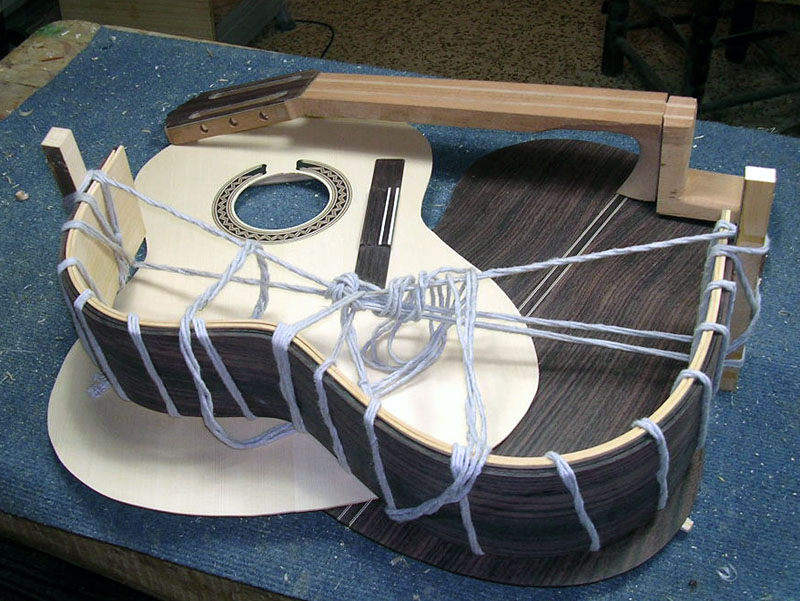
Images are resized automatically to a maximum width of 800px
 Attachment (1) Attachment (1)
_____________________________
|
|
|
|
REPORT THIS POST AS INAPPROPRIATE |
Date Apr. 4 2006 7:22:22
 |
|
Guest

|
 RE: TRUSS RODS... (in reply to JBASHORUN) RE: TRUSS RODS... (in reply to JBASHORUN)
|
|
|
James
I use two reinforcement strips hidden inside the neck because it works the best against warping and because I find that it looks the best.
There´s nothing wrong with a dovetail joint, it even gives you the oportunity to work with the neck angle after having finished the body. The way I build is the traditional Spanish way.
_____________________________
|
|
|
|
REPORT THIS POST AS INAPPROPRIATE |
Date Apr. 4 2006 17:25:10
 |
|
Guest

|
 RE: TRUSS RODS... (in reply to JBASHORUN) RE: TRUSS RODS... (in reply to JBASHORUN)
|
|
|
quote:
Btw, I asked my teacher again if the neck wood affects the tone. he said definitely not. In fact he said the theory was "b*llocks". And that the tone comes 99.99% from the soundboard. I guess different people have different views. I shall try and do some research to investigate.
I suppose your teacher calls himself a serious builder. He´s then the first of many that I know or have heard of who has said so.
To me it´s like saying that the vibrations that the guitar transmits through the neck does not influence in the overall sound of the guitar. 
I wont even call it theory. Build a couple of leightweight blanca pegheads and you´ll see that they react very different from other nylon string guitars.
If the tone came 99,99% from the soundboard, why should we the discuss the use of different tone woods like cypres or rosewood? They would only change the sound with some 0,01%    That´s what I call theory without any roots in real life. That´s what I call theory without any roots in real life.
_____________________________
|
|
|
|
REPORT THIS POST AS INAPPROPRIATE |
Date Apr. 5 2006 6:54:21
 |
|

 
JBASHORUN
Posts: 1839
Joined: Jan. 23 2005

|
 RE: TRUSS RODS... (in reply to Guest) RE: TRUSS RODS... (in reply to Guest)
|
|
|
quote:
If the tone came 99,99% from the soundboard, why should we the discuss the use of different tone woods like cypress or rosewood? They would only change the sound with some 0,01% That´s what I call theory without any roots in real life.
Anders, thats a good point. I told this to my teacher and he told me a story about the famous guitar maker Antonio De Torres, who made the back and sides of a guitar out of paper-mache to proove that the back and sides of a guitar did not affect the tone:
"Torres knew that lightness was essential in the vibrating surface of an instrument. But a large soundboard, though potentially louder, is heavier than a small one. Making it thinner to reduce its weight would make it weak and flexible, with unfortunate effects on the sound. The solution lay in building a soundboard that was 'domed', arched in both directions, over an arrangement of wooden struts.These famous fan-struts would ensure the static strength of the tapa, the soundboard, while letting it respond to the vibrations of the strings.
The system's efficacy was proved by Torres' experimental guitar, built in 1862, with papier-mache sides and back. This is no longer playable, but those who heard it accepted its maker's contention - confirmed by modern physicists - that only the top of a guitar is of real importance in determining the character of its sound."
(You can read the full version of this text at: http://www.guitarsalon.com/index.php?site_url=115 )
I wasn't around in 1862, so I can't claim to have ever heard such a guitar. But you have to admit that its a pretty persuasive arguement. Apparently it was Torres who originally claimed this, not my teachers. although several of my guitar making teachers (I have 3) have told me this story. The teacher who said that the theory was b*llocks, also claims to be very knowledgeable in acoustics, and gives students lectures on bracing/strut patterns and how tone is produced in guitars.
On the other hand the same teacher who gives these lectures also claims that guitar necks should usually be 100% straight (with no relief), which other people tell me is wrong. So I'm not quite sure who to believe...
Thanks again,
Jb
|
|
|
|
REPORT THIS POST AS INAPPROPRIATE |
Date Apr. 5 2006 15:18:04
 |
|
Guest

|
 RE: TRUSS RODS... (in reply to JBASHORUN) RE: TRUSS RODS... (in reply to JBASHORUN)
|
|
|
James, I know this Torres story very well, and it is a good argument and a good proof to how we all get judged by our own prejudices, but it is just an argument and nothing else.
Who has played that Torres guitar, in which shape is it (very bad) , what was it compared to etc. Sometimes history change to be myth and for some people myth is the same as religion
I can only say that to me it all matters, that the soundboard is by far the most important part, and that in my ears (and most other ears) cypres and rosewood back and sides produce different "colors" to a guitar.
And no paper maché pegheads from me 
If you want a good low action on your guitar, I will advice you to give it a bit of relief, but that´s just my experience, and yes I have build without, which meant taking of the frets, making relief and refretting.
_____________________________
|
|
|
|
REPORT THIS POST AS INAPPROPRIATE |
Date Apr. 5 2006 16:47:59
 |
|
 New Messages New Messages |
 No New Messages No New Messages |
 Hot Topic w/ New Messages Hot Topic w/ New Messages |
 Hot Topic w/o New Messages Hot Topic w/o New Messages |
 Locked w/ New Messages Locked w/ New Messages |
 Locked w/o New Messages Locked w/o New Messages |
|
 Post New Thread
Post New Thread
 Reply to Message
Reply to Message
 Post New Poll
Post New Poll
 Submit Vote
Submit Vote
 Delete My Own Post
Delete My Own Post
 Delete My Own Thread
Delete My Own Thread
 Rate Posts
Rate Posts
|
|
|
Forum Software powered by ASP Playground Advanced Edition 2.0.5
Copyright © 2000 - 2003 ASPPlayground.NET |
0.109375 secs.
|


 Printable Version
Printable Version





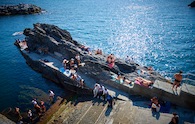
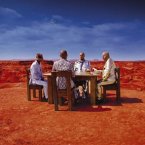
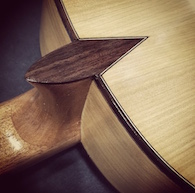
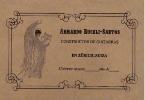


 I do 6 x 12mm
I do 6 x 12mm 




 New Messages
New Messages No New Messages
No New Messages Hot Topic w/ New Messages
Hot Topic w/ New Messages Hot Topic w/o New Messages
Hot Topic w/o New Messages Locked w/ New Messages
Locked w/ New Messages Locked w/o New Messages
Locked w/o New Messages Post New Thread
Post New Thread